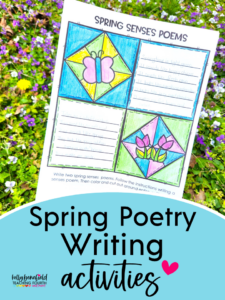One important part of classroom preparation is having a plan for classroom routines and procedures. As classroom teachers, we want our students to know and understand expectations, and we want them to meet those expectations so that our classrooms will run smoothly. Establishing classroom routines and procedures not only benefits the teacher, but it also helps our students have a successful year as well. Children need routines, and when we establish those expectations at the beginning of the year, our classrooms will run much more smoothly.

Establishing Classroom Routines and Procedures
Give Specific Guidance
We know that simply telling students that they should be “good” is not going to “cut it” in the classroom. Students need specific guidance. To help students understand and to give specific guidance, I choose one adjective to describe my classroom goals and expectations. The word that I choose is “calm.” On the first day of school, I simply talk to my students about my expectations for the year. I tell them that I like a calm classroom because I have found that my students learn better in a calm environment. Even when we are working with groups or partners, having a whole group discussion, or even walking down the hall, I expect my students to be calm.
We can still have fun, play a game, or do group work while behaving in a calm manner. We talked about what calm looks like, sounds like, and acts like. Of course, every teacher is different. Your classroom and personality may be different from mine, and that’s ok. Perhaps you want to choose another word to focus on such as “respectful” or “kind.” You could even have more than one! Think about your expectations and choose a specific adjective or two that works for you and your classroom that will help guide your students to excellent behavior.
Modeling Expectations
Actually taking the time to model expectations for the students can benefit their understanding of classroom procedures. Explain to the students what each routine should look like and sound like, then practice, practice, practice.
What should you practice? Practice transition times. Practice restroom procedures. Practice exchanging classes and getting materials together. We actually do this in my classroom. Our grade level exchanges classes, but we don’t exchange the first day or two. This gives us some time to practice. I actually take time to practice how to exchange, how to get materials together, how to line up, and how to stand in the hall to wait to walk to the next class. Practice lunchroom behavior, etc. Begin the first day of school, but continue to model throughout the entire year. Your students will still need reminders throughout the year.
Use Visuals
Post your expectations or rules in your classroom so that students will have a visual reminder of classroom expectations. I’m a firm believer that students need these visual reminders daily. Charts, posters, or bulletin boards can provide this for your students.
One visual that I always provide for my students is Motivational Posters. I believe that Motivational Posters help establish the expectations for classroom routines and procedures.
I personally prefer to use motivational posters instead of classroom rules. I like how motivational posters remind students in a positive way and challenge the students to be their best. As an added bonus, they serve as motivation for me as well. Sometimes I need a little reminder, too. Whether you use motivational posters or classroom rules, expectations should be posted as a visual reminder for your students. This will help your classroom run much more smoothly.
For more ideas for using motivational check out this blog post.

Review Routines and Procedures Throughout the School Year
Everyone needs reminders, and our students are no exception. We cannot explain classroom routines and procedures only on the first day of school, never mention them again, and expect our students to follow them perfectly throughout the rest of the year. That will just not work. Students will need reminders of your classroom expectations.
Some ways to incorporate procedural review into your classroom routine might be to
- Make it a part of your morning routine. This could be a daily focus on one routine or weekly reminders.
- Incorporate routines and procedures into writing activities. Let students write and explain one of the classroom routines.
- End the day with a discussion of routines and procedures. Ask students what routines did they feel they accomplished well that day and what routines they still need to work on.
- Continue to practice/model throughout the school year. Take time to revisit routines and procedures during the school year and practice and/or model the routines that become lacks during the year.
Have a blessed day!










